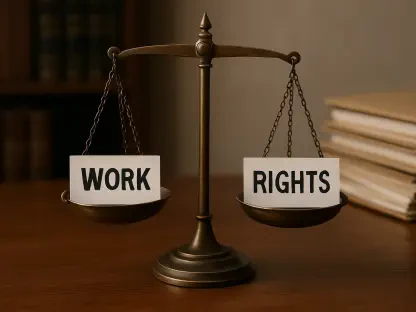In the ever-evolving landscape of labor relations, few stories have captured the public’s attention like the clash between Amazon and the Amazon Labor Union at the Staten Island warehouse. To shed light on this significant case, we turn to Sofia Khaira, an expert in diversity, equity, and inclusion. Sofia offers a wealth of insights into the intricacies of building equitable work environments and enhancing talent management practices.
What led to the historic election vote for union representation at the Staten Island warehouse in 2022?
The Staten Island warehouse workers’ decision to vote for union representation in 2022 was rooted in a shared desire for improved working conditions and greater participation in shaping those conditions. The workers were likely motivated by a combination of concerns over labor practices and the hope that union representation could offer a stronger negotiating platform. This reflected a broader trend in labor movements, where employees seek to assert their rights and interests collectively.
Can you explain the main reasons for the ongoing conflict between Amazon and the Amazon Labor Union?
The conflict stems largely from Amazon’s initial refusal to recognize the union even after certification. The friction is intensified by Amazon’s alleged actions that, according to an NLRB judge, violated workers’ rights to representation during disciplinary meetings. This persistent tension highlights the challenges in achieving mutual agreement within labor relations, particularly when powerful companies encounter rising labor voices.
How did Amazon violate federal labor law concerning the presence of union representatives during disciplinary meetings?
Amazon’s violation involved denying workers the right to have a union representative present during disciplinary meetings, claiming they didn’t have a union. This contravened the National Labor Relations Act, which affirms workers’ rights to organize and advocate for their collective interests. Such actions undermine the legal framework designed to protect workers’ rights in the workplace.
What are Weingarten rights, and how did Amazon allegedly infringe upon these rights for its workers?
Weingarten rights allow workers to request the presence of a union representative during interviews that could result in disciplinary action. These rights aim to empower workers with support and guidance during potentially adversarial situations. The judge found that Amazon denied these rights to several employees, reflecting a disregard for this legal protection and compromising the fair treatment of workers.
Why was the suspension of a union leader deemed illegal by the NLRB judge?
The NLRB judge ruled the suspension illegal because it demonstrated clear disparate treatment against the union leader compared to how other workers were investigated. The prolonged duration of the investigation, without a valid explanation, signaled anti-union bias. This highlights a crucial aspect of labor law and the importance of equitable treatment, regardless of union involvement.
What evidence did Judge Green cite to support his ruling of anti-union animus by Amazon?
Judge Green pointed to the remarkably extended investigation duration as evidence of anti-union animus. He noted that Amazon had gathered the necessary evidence within a week but inexplicably prolonged the process for a further 10 weeks. Such actions can be interpreted as an intentional strategy to intimidate and suppress union activity, which is contrary to labor rights.
How does the length of the investigation into the union leader compare to investigations of other workers?
Investigations into other workers were typically concluded within a week, whereas the union leader’s case was inexplicably drawn out for 10 weeks. This discrepancy underscores the suspicion of unfair treatment and suggests that the investigation length was used as a punitive measure against union activity.
What was the outcome for another employee who Amazon allegedly suspended and discharged due to union activities?
The outcome for this employee differed from the case of the union leader. The judge dismissed the charges, deciding that there was no evidence of misconduct in the timing of the suspension and discharge. This illustrates the complexity of adjudicating labor disputes, where each case must be carefully considered on its own merits.
How did the NLRB judge justify dismissing charges related to the suspension and discharge of another worker?
The judge concluded that the evidence did not support claims of anti-union discrimination in the timing of the other worker’s suspension and discharge. The dismissal suggests that the employer’s actions fell within acceptable legal procedural boundaries, despite the ongoing tensions surrounding union activities.
How has Amazon responded to the union’s certification and subsequent legal challenges?
Amazon’s response has been marked by a refusal to negotiate with the union, citing legal ambiguities and alleged procedural flaws. This stance has led to significant legal challenges and highlights the company’s commitment to retain its operational autonomy amidst rising labor activism. This points to a broader theme of the tension between corporate interests and labor rights.
Do you have any advice for our readers?
My advice would be to stay informed about your rights in the workplace and understand the protections available under labor laws. Empowering yourself with knowledge is a critical first step in advocating for fair treatment and cultivating a work environment that values inclusivity and open dialogue. Whether you are part of a union or an independent employee, knowing the landscape can help navigate complex labor relations effectively.









